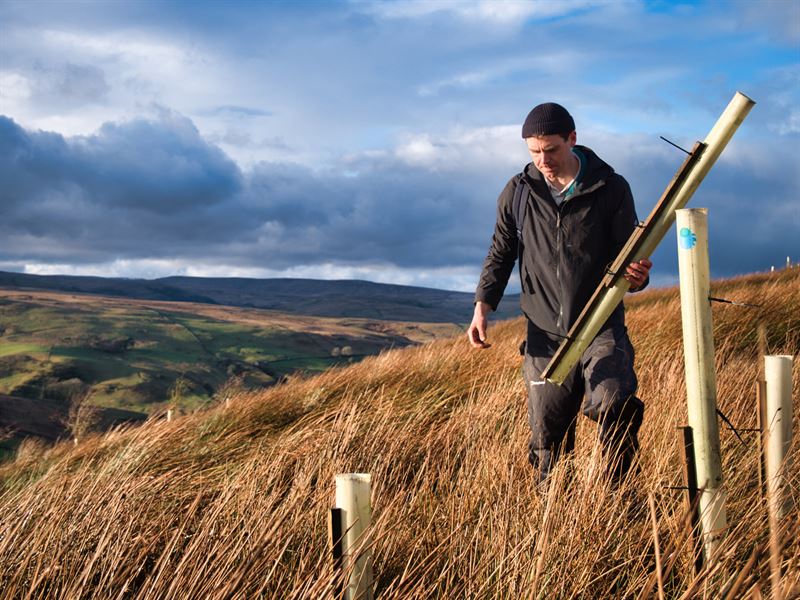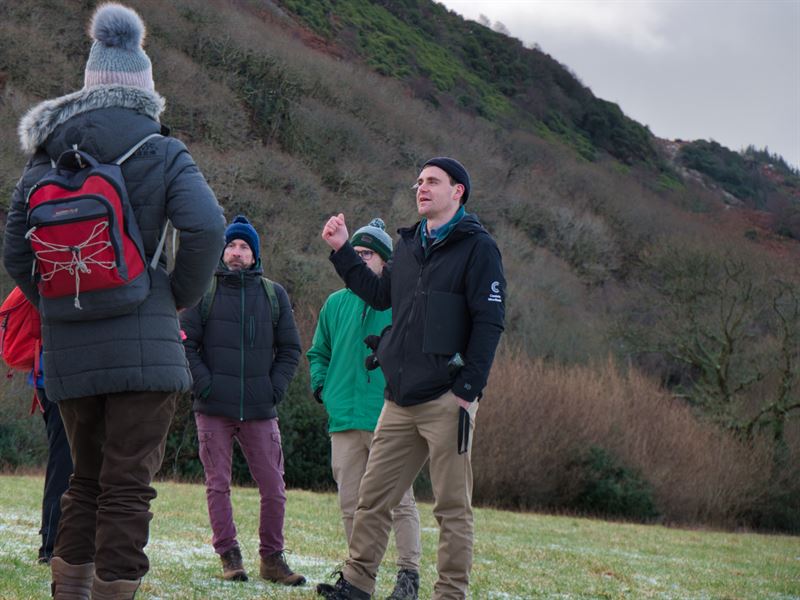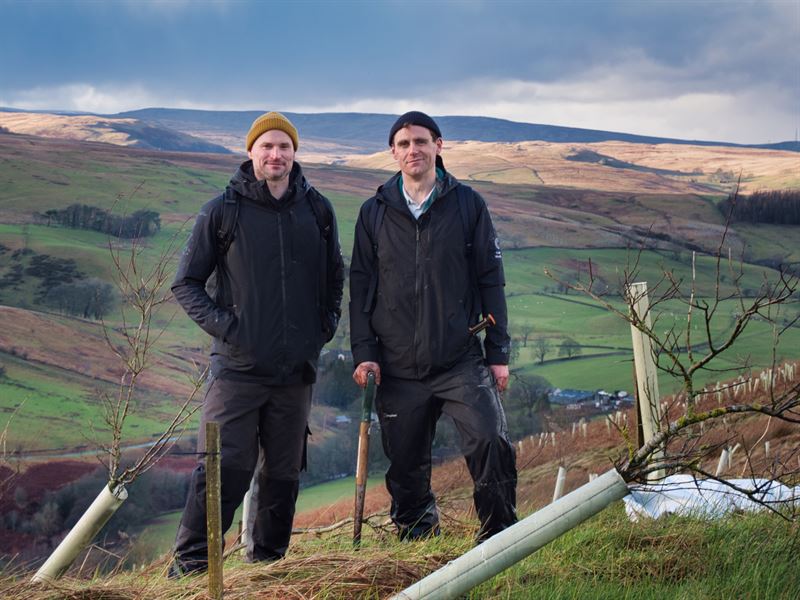Forester, surfer, and tree fanatic, we caught up with Lochlan who joined the team in Sept last year to lead the Woodland Futures Project.
Why trees?
I grew up in Cumbria. We went to Whinlatter and it felt like we went there all the time, I felt like I was always in the woods. At Whinlatter they had a working diorama of a commercial forest, I was a tiny kid listening to this thick Cumbrian accent narrating what was going on, along with sounds of chainsaws and timber wagons. I just remember that whole experience. I ended up cutting trees for a living so it must have had an impact!
I got into forestry because I wanted to do something outdoorsy and I wanted to be in Cumbria, my love of forestry came from spending 4 years studying and understanding all the parts of nature and how forests work I just became obsessed with trees and everything they could do for people.


How did you get into forestry?
I did a forestry degree, it kind of geared people up to be private sector foresters and made you into an employable package, so that's where I ended up. I put an advert up in a forestry publication saying 'recent graduate 1st class degree' and I got a phone call for an interview!
I took a job with Scottish Woodlands for 7 years and it was amazing. It was the best. Doing huge projects, it was high tension and 'big targets' forestry. I found I was good at it, this type of commercial forestry, but I slowly realised that this was not how I came into forestry and wanted to focus on sustainability.
So I left and did something completely different, which was working for Natural England, the job wasn't forestry specific but did give me a good insight into conservation, different habitats, non-woody habitats. That opened my eyes. As a young student, I thought everything should be forests, but I started to understand the value of non-woodland habitats and, working with farmers, understanding how to combine food production and timber production and biodiversity. You can't have 100% of one thing but you can have a nice balance.
And then I took this job, which is the best job I've ever had because it doesn't have an agenda. My first job was profit-driven, and sustainability was a bonus, and in my second job, it was the conservation of habitats that were deemed important; priority habitats needing protection.
But now for Cumbria Woodlands, I'm an advocate for the management of nature with no agenda so we can take each piece of land on its merits and see how much benefit you can squeeze out of it. One tree added to a field can make us happy! It's nice not to have a fixed idea of what success looks like and be trying to do the same thing everywhere.


What's been the best thing about joining Cumbria Woodlands?
It's the team, I felt that as soon as I interviewed. I've never been part of something like this. The team feels friendly and relaxed and the mission is close to my heart. I get out of bed with an enthusiasm I've not had in years, I want to work with these people to achieve our goals.
What are you doing within Cumbria Woodlands?
The project is called Woodland Futures and is a partnership between Cumbria Woodlands and the Lake District Foundation and is funded by Defra, Heritage Lottery Fund and the Woodland Trust. When people ask me what I do I tell them I talk about trees. I talk in a way that gets people as excited about trees as I am. I talk about trees a lot, and in a load of different ways.
What do you want to try and achieve?
The mission is to show people how they can incorporate trees and woodland into their land and show how it can benefit them. We focus on their objectives because we want buy-in from them.
I want to convince people, and show people what they can get out of it. Be that getting the best timber value, how to manage a woodland for the most biodiversity, or showing how trees can help food production by providing shade and improving the quality of the livestock. I want to show people the options, and then let people make informed choices.
What is the biggest challenge within the project?
Change is the biggest challenge. Changing people's perceptions of what they believe is possible. Things get polarized and that can make change difficult because there can be inflexibility. To deal with this we are out at shows, and events, talking to people to get different ideas out there and other options, not just for landowners, but for everyone.

What gets you excited about trees?
They are 3D, the biggest and tallest habitat you can get. With that comes the possibility of structural diversity, which is not available in other habitats. If you have trees and shrubs and a diversity of light conditions etc. you get a huge diversity of ecosystems. The sheer amount of biomass it can contain is incredible and provides homes to fungi, mosses lichens, and birds... It's great!
Do you have a favourite part of Cumbria?
I like where I walk my dog every morning on the flood defences, between the golf course and the supermarket. It's a transition between nature and the city. With pasture and field trees, to one side you can see woodland and the river. I like the shift towards a less-managed landscape from the urban environment.
What do you get up to when not doing tree things?
Surfing as much as possible. It's the best thing other than trees. I surf on the east and west coast whenever I can and it gives me so much joy. I like music and play piano and guitar and I manage my garden under the principle of 'Patient Neglect'.
I also run a repair cafe once a month in Botcherby in Carlisle at a community centre. I did it for sustainability reasons, but I realised that the biggest value I got from it was the community it created and the connections it makes.